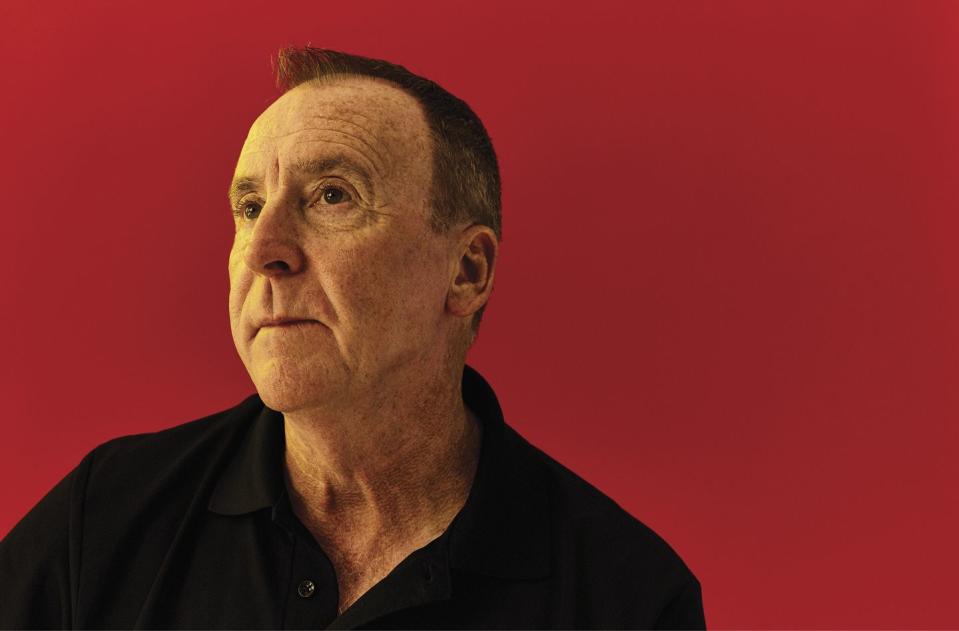The Engineer Who Teaches Race Car Drivers How to Breathe


Terry Lyles knew he was onto something the day he worked with a NASCAR team for the first time. It was 2007, and the psychology PhD, author, and stress coach’s student was team owner and crew chief Ray Evernham. Evernham was initially dubious, so Lyles explained his techniques in the simplest terms.
“How many engineers do you have?” Lyles asked.
“I have 83 engineers,” Evernham said. Aero engineers, vibration engineers, etc.
“Yeah?” Lyles said. “Well, how many human engineers do you have?”
“I don’t know,” Evernham said. “What the hell is that?”
“I am that,” Lyles said.
As Lyles recalls, he taught Evernham some exercises that yielded results. “Okay,” the stock-car titan said. “You’re hired.”
Today, Lyles is a one-of-a-kind coach specializing in an activity that every human on earth practices but few ever stop to think about. He teaches breathing (among other things). He has coached elite business executives, military figures, and more than a dozen professional race-car drivers—IndyCar aces (Ryan Hunter-Reay, Scott Sharp, Will Power), NASCAR stars (Kasey Kahne, Elliott Sadler, AJ Allmendinger), and more.

On the day of our interview, Lyles has IndyCar driver Oliver Askew with him. We are sitting in a friend’s garage, surrounded by vintage muscle cars and a private airplane, outside Palm Beach County, Florida, where Lyles is currently based. When Askew met Lyles, the athlete was an up-and-comer in the Indy Lights series. His future was on the line, and he needed help. To gain an IndyCar seat—his lifelong dream—he had to win. Period.
“I’m trying to find small gains on my competitors,” Askew elaborates. “In qualifying, the top five can fit into a few hundredths of a second. So anything I could do to improve my mental state and stamina was going to help.” Askew learned techniques to keep the heart rate down, the brain oxygenated, and the body relaxed while on track, which resulted in peak performance and boosts in mental and physical stamina. He took seven wins and seven poles during the 2019 Indy Lights season, won that national championship, and moved up to IndyCar the following year, driving with McLaren.

“It’s all about putting yourself in situations where you can succeed,” says Lyles.
Lyles grew up in Indianapolis, within earshot of the Brickyard. After earning his psych doctorate, he worked as a military consultant at Elmendorf Air Force Base in Alaska. There, he helped fighter pilots suffering from seasonal affective disorder. During months when the sun barely rose and sleep disorders set in, he had to find a way to help them keep their wits without medication—a no-no for flyers of supersonic jets. From there, it was a natural leap into the racing world. “As a fighter pilot and a race-car pilot, you’re under similar stress,” Askew offers. “There’s not much room for error.”
In a sense, Lyles’s approach is straightforward: He can make drivers faster by teaching them breathing techniques. In another sense, the work is more complicated. Lyles teaches drivers to control what they can, specifically their mental, emotional, spiritual, and physical states of being. Everyone can use the techniques to improve performance, but it can be critical for people who operate in high-stakes, high-risk worlds—like race-car drivers.
“You’re out there with 33 maniacs on a track,” Lyles says. “Every one of them has road rage. Everyone is doing everything they can to pass you.” You’ve got spotters and crew chiefs yelling into the radio, countless knobs on the steering wheel you need to tweak to find more speed, and regular doses of brain-melting loads of g’s. Heat! Noise! A jet pilot might hit over 8 gs, but only when taking off, during occasional sharp turning, and while wearing a special g suit. The race-car driver can hit 3-g loads, with no g suit, every 20 seconds for four straight hours. Drivers tire out specifically because they forget to breathe properly due to stress. Stamina and focus go out the window—and the race is lost.

Lyles breaks down breathing into four quadrants: high negative (shallow, fast breaths, like hyperventilating), low negative (shallow and slow, like a sigh), high positive (fast, deep breaths), and low positive (long, deep breaths, like in yoga or scuba diving). The latter two can be used in different combinations to put the body and mind into a flow state.
“This is where I compete at my best,” Askew explains, “when I don’t have to think about what I am doing on track. Letting everything come naturally. These breathing techniques help me find that space, no matter what’s going on around me.” Lyles nods in agreement and demonstrates what he calls a “g breath” as an example—a low-positive breath on approach, followed by staccato release during the corner, with another low-positive breath on corner exit. On every straight, during every pit stop, before the g load in every corner, the driver employs his breathing techniques.
Try taking four quick high-positive breaths (fast, deep), then ask yourself what you’re feeling. It’s a legal high. Now, take a minute for low-positive breaths (slow, deep). You can feel your body relax, your focus kick in. Now you’re ready to take that golf swing. Or head into that job interview. Or put up your best lap time on a Sunday.
“Race teams have so many engineers to deal with the car,” Lyles explains. “But where’s the engineer focused on the most critical thing the driver can be doing for the body? That’s the human engineer.”
After two seasons in IndyCar and one in Formula E, Askew, now 27, was without a ride in 2023. He’s looking to make a comeback this year. Together with his coach, he will attempt to breathe new life into his future.

A car-lover’s community for ultimate access & unrivaled experiences.JOIN NOW Hearst Owned
You Might Also Like

 Yahoo Autos
Yahoo Autos 